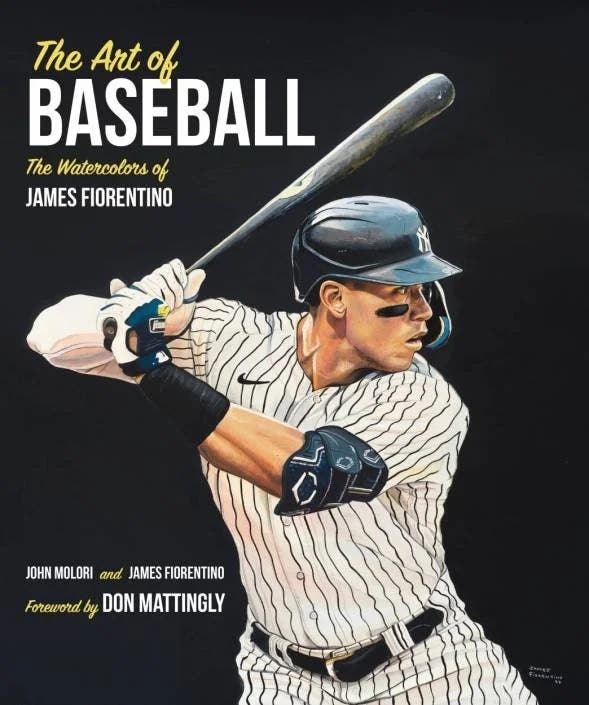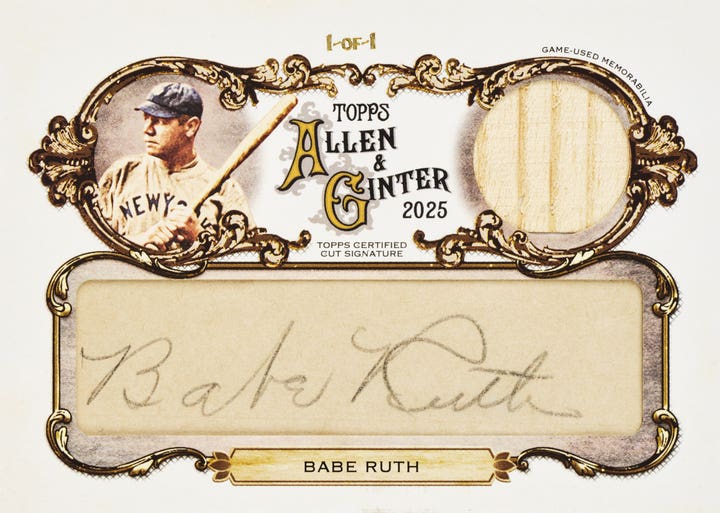Willie-Mays
Jon Matlack Interview: Even Major Leaguers Have Heroes
By Paul Post
Jon Matlack has boxes filled with memorabilia from his stellar, 13-year career with the New York Mets and Texas Rangers.
Some of it, he hasn’t even decided what to do with yet.
One piece, however, he’s especially proud of, which explains why it’s prominently displayed at his comfortable home in upstate New York’s Adirondack Mountains. Forty years ago this past autumn, the 23-year-old Matlack and Willie Mays, an aging superstar, helped lead the Mets to the 1973 Fall Classic where they almost upset the defending World Champion Oakland A’s.
The year before, the two became teammates when Mays was traded to New York from the San Francisco Giants. Matlack was the National League’s Rookie of the Year that season, with an impressive 15-10 record and sparkling 2.32 ERA.
After one complete-game victory, a photographer caught Mays congratulating Matlack as he stepped off the mound. To Matlack, it’s a constant reminder of their friendship.
“Willie’s an icon of the game,” he said. “I’ve got that picture framed, hanging on the wall. It’s one of my prized possessions. I’d just completed a game, he played first base. He’s congratulating me after the game, shaking my hand. That’s just really cool.
“I count myself as one of the lucky people who got to play with Willie,” Matlack continued. “I got to play against him a little bit, too. I think it was more fun playing with him.”
Although separated by age, the two got along well.
“He was like a dad at times,” Matlack recalled. “A group of us might be out having a bite after a game, with a day game the next day. He’d look at me and say, ‘Kid, you’re pitching tomorrow. You’d better get home and go to sleep!’ Just stuff like that. It was a neat relationship.”
By 1973, Matlack was clearly one of the game’s top young hurlers, which he proved beyond all doubt during the National League Championship Series against Cincinnati’s heavily favored Big Red Machine. After Hall of Famer Tom Seaver lost the opener, Matlack evened things up by winning Game 2 of the five-game series.
“Tommy got beat, 2-1, on sole home runs by (Pete) Rose and (Johnny) Bench,” Matlack said. “You couldn’t pitch a much better game, and I’m sitting in the dugout charting it because I’m pitching the next day. I’m looking back when it’s all over thinking, ‘My God. What have you got to do to beat these guys?’ It was just a feeling that you’d better be on your game or the same thing’s going to happen to you. How, I don’t know, but fortunately it worked out that I made the right pitches when I needed to, had a good game and we won. It was very close for a long time. Rusty Staub kept telling me, ‘(Don) Gullet tips his pitches. He’s going to tip one and I’m going to hit one out today.’ So in the ninth inning he hit a three-run homer. We ended up winning 5-0. I think up until that point it was 1-0.”
Matlack’s memorabilia collection also includes programs from that year’s World Series, game-worn jerseys from the Mets and Rangers, his 100th win ball and his 1975 All-Star Game Co-MVP Award trophy.
Of course, there’s also his Rookie of the Year Award. There’s no doubt how much that still means to him, because the license plate on his big white Toyota pickup truck reads: “72 ROY” (Rookie of the Year) with the Mets’ orange-and-blue logo next to it.
“When I was growing up, my mom was religious about keeping scrapbooks,” he said. “I’ve got some of those, continuing into my pro days.”
Matlack, a native of West Chester, Pa., is in the Chester County Sports Hall of Fame, which has a variety of items on display from his spectacular high school career. During three years on varsity, the only game he lost was the last one, a playoff contest.
“In my junior year, I didn’t allow a run, had 340-plus strikeouts in 140 innings, seven or eight no-hitters and a perfect game,” Matlack said.
It’s no wonder the Mets made him their No. 1 pick, fourth overall, in the 1967 draft right out of high school. Surprisingly, Matlack had no idea what destiny held in store for him.
One day, during a playoff game toward the end of his junior year, he asked his coach, “Who are those guys back there with the clipboards and stop watches?”
“They’re scouts.”
“What’s a scout?
He really didn’t know.
“What are they here for?” Matlack asked.
“They’re here to watch you,” the coach said.
By the end of his senior year they were showing up in droves. His American Legion team did so well that summer that he couldn’t sign his first pro contract until August. That fall, the Mets sent him to an instructional league.
After three years of seasoning in the minors, Matlack made his big league debut on July 11, 1971, before joining New York for good a year later.
The ’73 Mets won only 82 games en route to capturing the National League East on the season’s last day. The Reds, whom they would beat in the postseason, had gone 99-63.
However, the Mets always did what had to be done, whenever it needed doing.
“It was a very weird year,” Matlack said. “If you look back at the division, I think every team in the division was in first place at some time during the season. We just ended up in first place at the end when it counted.”
Mays brought invaluable leadership to the club, both on and off the field, and the Mets were managed by another Hall of Famer, Yogi Berra, who had played in more World Series than anyone in baseball history. Quite simply, it was a fascinating cast that included several key players from the 1969 “Amazin’ Mets” World Championship team, such as Seaver, catcher Jerry Grote and shortstop Bud Harrelson.
“The emphasis was not on the individual, but on team goals,” Matlack said. “If a guy who was typically trying to hit a home run needed to advance runners, it got done, to allow us to win. In large part, Yogi was responsible because of the way he handled everybody. He gave you the bats and balls and let you play the game instead of trying to manipulate the players on the field.”
The turning point came during a late-season night game against the Pirates at Shea Stadium. It was almost as if the Mets had baseball’s gods on their side in a play that’s become known as the “Ball on the Wall.”
With Richie Zisk on first base, Pittsburgh’s Dave Augustine hit a blast that appeared destined to leave the park and break a tie in the top of the 13th inning. But the ball hit the point of the left field fence, bounced high in the air and went right into left-fielder Cleon Jones’s glove. Instead of a devastating blow, the play was like a gust of wind behind the Mets’ sails.
“Richie Zisk got thrown at home plate and we won in the bottom of the inning,” Matlack said. “That play turned the game around, and that game turned the season. To me, that’s the point at which we started to go on the upswing.”
Soon after, Matlack was in line to pitch the division-clincher.
“We were in Chicago; I’m facing Fergie (Jenkins) in a day game and an hour and 42 minutes after we started, I got beat, 1-0. That’s like, ‘Damn! I can’t do much better than that.’ That’s just one of those days where you give up one and that’s too many,” he said.
However, the Mets won the next day, to put them in the postseason.
After knocking off the Reds, they traveled to Oakland for Game 1 of the World Series, where Matlack lost another heartbreaker, 2-1, on two unearned runs as the A’s managed only four hits but capitalized on a pair of Mets errors.
Game 2 was a wild, 12-inning affair that New York won, 10-7. After dropping Game 3, at Shea Stadium, Matlack’s Game 4 masterpiece evened things up again. He held the A’s to one run before giving way to relief help in the ninth inning of a 6-1 Mets victory.
After capturing Game 5, New York was in the driver’s seat as the Series shifted back to Oakland for the final two contests. Jim “Catfish” Hunter outdueled Seaver in Game 6, and the Mets simply ran out of gas in the finale, which Matlack started.
“I gave up two home runs; one that Campy (Bert Campaneris) hit into the wind to the opposite field. Then Reggie (Jackson) hit a hanging curveball that anybody should have hit. He didn’t miss it. That was his job. It was a bad pitch,” Matlack recalled.
“But prior to that game, I think we outplayed them, we out-hit them, we out-pitched them. We did everything better, but we only won half of those games. We could have won all six. The series should have been over. It should never have gone seven.
“In Game 1, Felix (second baseman Felix Milan) made an error and I allowed the pitcher to hit a ground ball fair inside the third base line that drove in those runs,” Matlack said. “If Felix catches the ball, they don’t score. If I get the pitcher out, they don’t score; we win 1-0. There were a lot of little things that took place in all of those games. There was enough of them that it allowed Oakland to stay in games. They won half of them.”
Disappointing as it was, Matlack still looks back on the ’73 Series as his career highlight. It truly was a Fall Classic, with four of the games decided by two or fewer runs and lineups that featured five future Hall of Famers – Mays, Seaver, Jackson, Hunter and A’s relief pitcher Rollie Fingers.
As a young hurler, Matlack really liked Berra’s style.
“Yogi was a gem. Yogi would not over-manage. By today’s standards, he would under-manage. It was, ‘Let’s put the right people on the field and let them play the game. Maybe we’ll make a change here or there,’ ” he said.
“He was very easy to play for and work with – with the possible exception that he was hard to understand when he came to the mound,” Matlack said, smiling. “Sometimes he’d come out to the mound and say something and I really couldn’t grasp what it was. I wasn’t sure how to respond and I didn’t want to make him repeat it. So I finally asked Seaver, ‘Look, Yogi comes to the mound, and I can’t understand what he’s saying all the time. What the heck do you do?’ ”
“It’s real easy,” Seaver said.
“What do you mean, it’s easy?” Matlack responded.
“When Yogi comes out to the mound and says whatever he says, if he doesn’t put his hand out, just say OK. He’ll go back to the dugout. If he puts his hand out, put the ball in it and you go back to the dugout. It’s that simple.”
No concussion list here: Matlack recalls a thunderstorm, ball strike to the head and one crazy hospital visit
Jon Matlack is quite accommodating when it comes to signing things for people.
One time, however, he might have given the most bleary-eyed autograph in history after getting beaned in the head in a game against the Braves. The incident is one of the funniest of many fond memories Matlack has from 1973, when the Mets reached the World Series.
“It’s May, we’re at Shea Stadium in a light rain. I’ve got a 3-2 lead in the seventh inning with two outs, the bases loaded, and Marty Perez is at the plate,” Matlack said. “There are thunderstorms in the area; I’m trying to kill this threat and keep my 3-2 lead.”
With the count 2 and 2, Matlack threw a low curveball that Perez offered at. When appealed, the first base umpire ruled no swing.
“Now it’s 3 and 2,” Matlack said. “I overthrew a fastball, landed on my heel way too hard and lost sight of the ball. I see the bat swing, I hear the crack of the bat, but I don’t see the ball. Finally, 12 to 15 feet away, I pick it up. I got my bare hand up where it tipped my fingers, the tip of my cap and hit me right over the left eye, and one-hopped into our dugout for a ground-rule double. It cost me two runs, cost me the game. Now it’s raining harder.
“They came out and checked me on the mound. I thought I got hit in the mouth because it really hurts. I’m reaching to see if I’ve got any teeth left and (catcher) Jerry Grote grabs my hand and says, ‘Wait for the trainer.’ As I’m looking up, I could see my forehead. That’s when I realized I got hit there, because it’s swollen.”
Now it’s really raining, as the skies opened up.
“So they cover me with a tarp to keep my dry. My wife, who’s in the stands, thinks I’m dead!” Matlack said. “People had umbrellas up, and she’s trying to peer around the umbrellas. They told me later that she’s only the second woman other than (Mets owner) Joan Payson to get in the clubhouse. They let her in to see that I’m OK. They cut all my uniform and stuff off me. They’re going to send me to the hospital. Really, I didn’t feel bad at that point, except very, very tired with a headache.
“So they take me out and put me in an ambulance,” Matlack said. “We’re trying to take the Grand Central Parkway to Manhattan, to Roosevelt Hospital. But the drivers can’t find their way out of the parking lot to get onto Grand Central. So I’ve got an ice bag on my head, and I’m sitting up, looking out through the little cubbyhole, directing them how to get out onto the highway.
“When we get down to Manhattan, there’s been rain and a number of accidents, so the ambulances are backed up outside the hospital. It’s still raining; they hoist me out in just my shorts, and I’m getting rained on as they wheel me in. Now it’s so crowded in the emergency room that they don’t know where to park me.
“So they say, ‘Wait here, we’ll find out what to do with you.’ ”
He was put right next to another gurney.
“I didn’t know it at the time, but it’s got a guy who I think was drunk on it. He decides it’s time to get up, and falls on top of me as he’s getting out of his gurney,” Matlack said, laughing. “So we get past that; they get me in bed and tell me, ‘OK, you really need to rest.’ Well, every 30 minutes they’re coming in, poking pins in my toes, shining a light in my eyes because of the head injury to make sure everything is OK.
“Somewhere around 11 o’clock there’s a shift change,” he said. “Word had gotten around the hospital that I was there.”
Then the unbelievable happened.
“People come into the room, roll me over, pick up the ice bag, and one of them says, ‘Oh yeah, this is the guy. Will you sign this right here?’ Because they’re leaving right after the shift change.”
Three days later, Matlack was released from the hospital with a fractured skull, a crack running down toward his nose.
As he was leaving, Matlack told the hospital, “Don’t tell anybody,” trying to divert attention and interviews.
On the way home, he relaxed and stayed quiet as his wife, Dee, drove the 50 miles to Katonah. N.Y.
“When we pull in the driveway, there’s a camera waiting for me,” Matlack said. “And they are so ticked off that there’s no visible sign that I’m hurt. They literally had a wheelchair. They wanted me to sit in the wheelchair and put an eye patch on to do this interview.
“I’m carrying my daughter, who’s just a baby, and I told the guy, ‘If I didn’t have my daughter in my arms right now I’d probably deck you. Get out of here!’ It was just a fiasco.”
Two days later, the doctor told Matlack he was fine, so he rejoined club in Montreal, pitched 11 days after the injury, six strong innings against the Pirates, and did not miss another start.
“So it was crazy,” he said, smiling. “That explains some of my idiosyncrasies I guess.”
Paul Post is a regular contributor to SCD. He can be reached at paulpost@nycap.rr.com.








